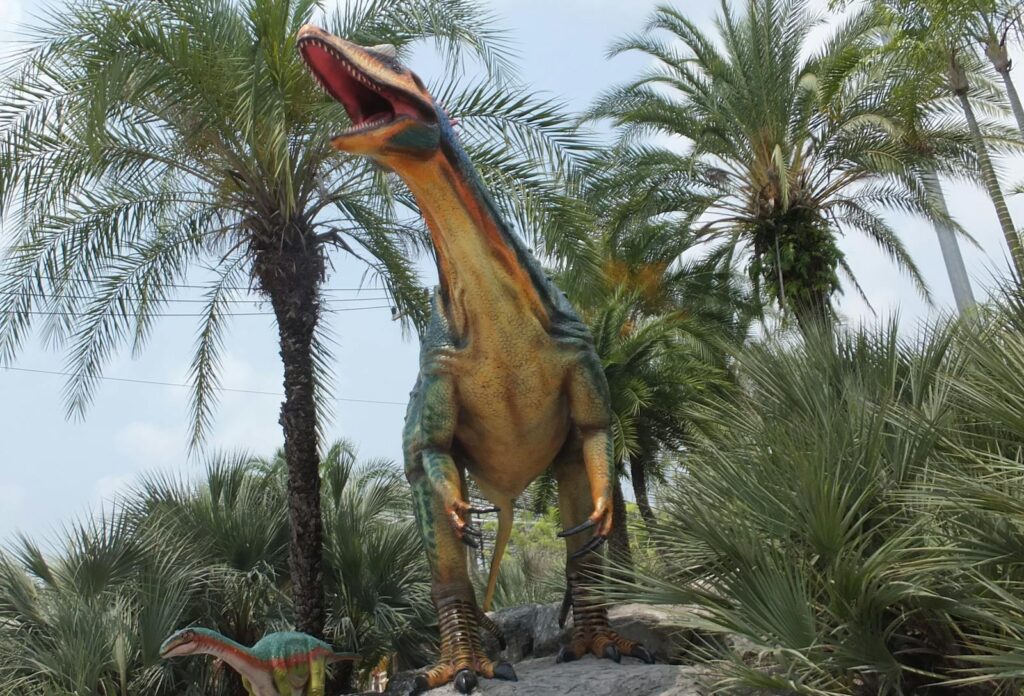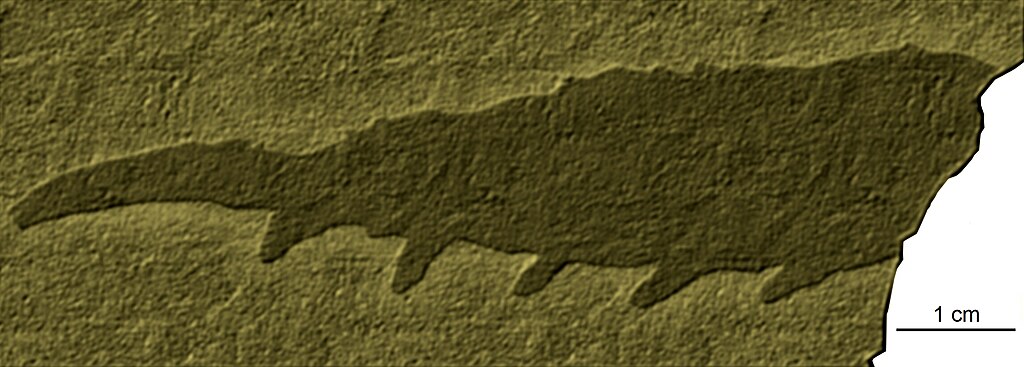The image of Tyrannosaurus rex, with its massive head, powerful legs, and comically small forelimbs, has become an enduring symbol of the dinosaur world. For decades, paleontologists and curious minds alike have puzzled over the apparent evolutionary contradiction of these mighty predators possessing such diminutive arms. Recent scientific advances have shed new light on this anatomical curiosity, revealing that what might appear as an evolutionary mistake may have served sophisticated purposes.
This article explores the latest research on why certain dinosaur species evolved shortened forelimbs and how these seemingly disadvantaged appendages may have provided unexpected functional advantages in their prehistoric environments.
The Tiny-Armed Giants: Which Dinosaurs Had Reduced Forelimbs?

While the T. rex might be the poster child for disproportionately small arms, it wasn’t alone in this evolutionary adaptation. Several theropod dinosaur groups independently evolved reduced forelimbs, suggesting this trait emerged multiple times throughout dinosaur evolutionary history. Carnotaurus, with arms even smaller than T. rex relative to its body size, represents an extreme case among the abelisaurid family.
Other notable examples include Majungasaurus from Madagascar, the Asian tyrannosaur Tarbosaurus, and the South American Gualicho. This pattern of convergent evolution—where unrelated species develop similar traits in response to comparable environmental pressures—hints that tiny arms weren’t evolutionary accidents but served specific purposes in these predators’ lifestyles. The widespread occurrence of this trait across different continents and time periods indicates a significant adaptive advantage that modern research is only beginning to unravel.
Evolutionary Timeline: When and How Arms Became Reduced
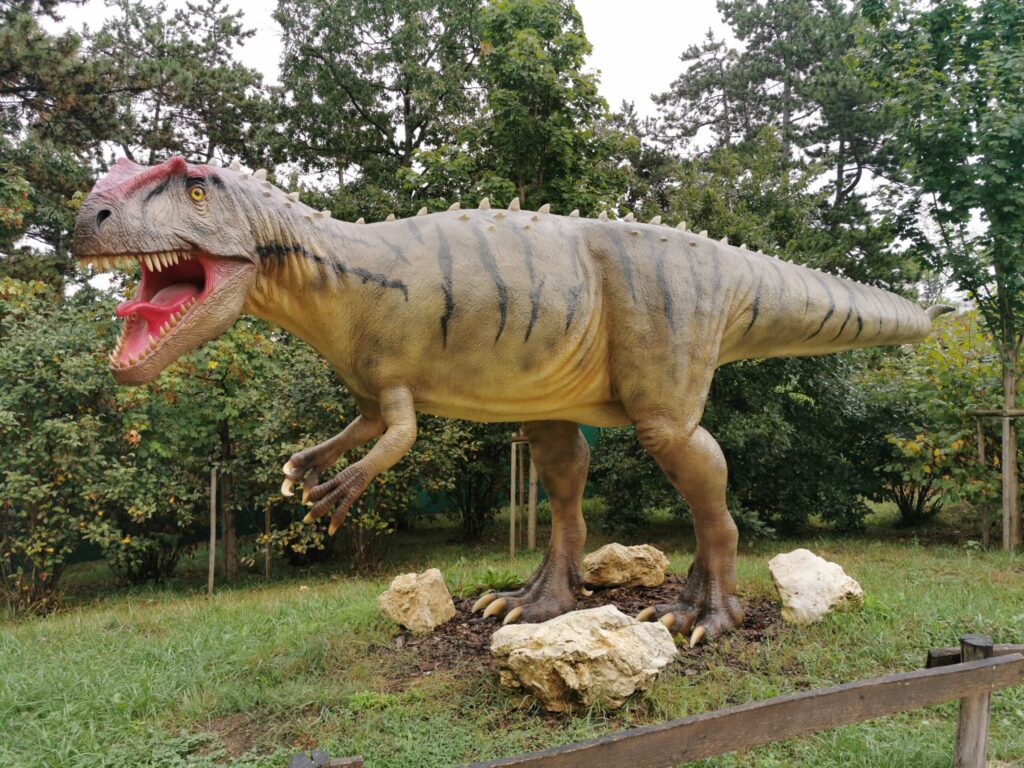
The reduction of forelimbs didn’t happen overnight but occurred gradually over millions of years through evolutionary processes. Recent fossil discoveries have allowed paleontologists to track this transformation with unprecedented detail. Early tyrannosaur relatives from about 160 million years ago possessed relatively proportional arms, but by the Late Cretaceous period (approximately 68-66 million years ago), the arms of T. rex had shrunk dramatically.
Genomic studies of fossilized material suggest this reduction may have been driven by changes in Hox genes, which control body pattern development during embryonic growth. Interestingly, this shrinkage appears to have accelerated once these predators evolved more massive skulls and jaws, indicating a potential trade-off in body plan development.
Comparative anatomical studies across different lineages show that arm reduction typically coincided with other adaptations like strengthened neck muscles and more powerful bites, revealing a complex interplay of evolutionary pressures shaping these prehistoric predators.
The Biomechanical Paradox: Strong Despite Their Size

One of the most surprising revelations from recent research concerns the remarkable strength of these diminutive limbs. Despite their reduced size, T. rex arms were far from weak—each could likely curl about 400 pounds (180 kilograms), according to biomechanical analyses. Advanced computer modeling techniques have demonstrated that these arms featured extremely dense bone structure and attachment points for powerful muscles, creating a concentrated force potential rarely seen in other animals.
3D stress analysis studies published in 2022 revealed that the arms were built to withstand significant strain during brief but intense activity. The biceps alone may have been capable of producing tensile forces comparable to modern-day birds of prey despite the much larger body size of the dinosaur. This unexpected strength contradicts earlier assumptions that the limbs were vestigial or functionless, suggesting instead that they evolved for specialized purposes requiring brief applications of considerable force.
Feeding Hypotheses: Were Tiny Arms Useful During Predation?
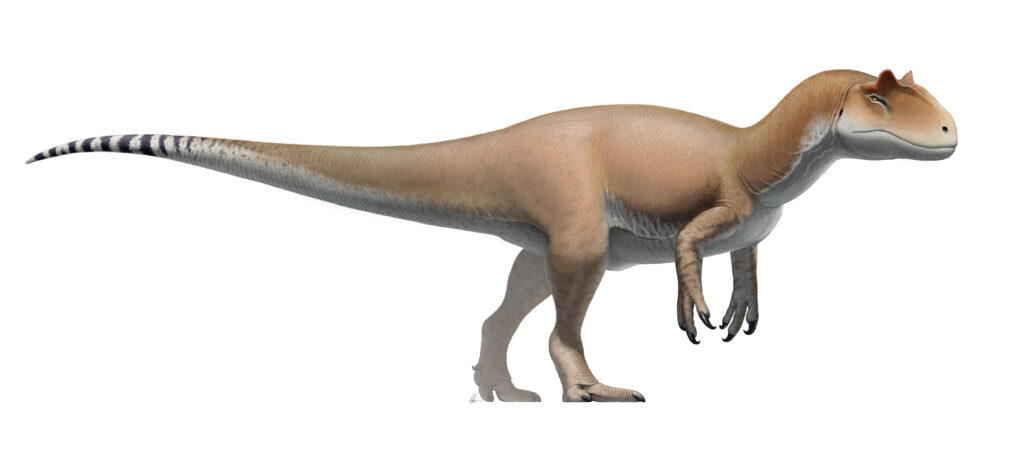
Several compelling theories propose that reduced forelimbs may have actually enhanced feeding efficiency in large-headed predators. One groundbreaking hypothesis suggests that shorter arms prevented accidental self-amputation when multiple tyrannosaurs fed on the same carcass—a likely scenario supported by fossil evidence of pack-hunting behaviors.
The tight maneuvering of several multi-ton predators around a carcass would create a dangerous environment where longer limbs might be vulnerable to the slashing teeth of feeding companions. Another theory proposes that the short, powerful arms could have functioned as “meat hooks,” helping to secure struggling prey held in the jaws.
Recent analysis of muscle attachment points indicates the arms could pull with tremendous force toward the body while maintaining a limited range of motion. Experimental models using artificial T. rex limbs demonstrated their effectiveness at close-quarters grappling, particularly for holding prey against the body while the powerful jaws delivered fatal bites—a hunting strategy that wouldn’t require extensive reach.
Courtship and Mating Functions: A Different Perspective

An intriguing area of new research explores the possibility that reduced forelimbs played important roles in dinosaur courtship and mating behaviors. Paleontologists studying modern birds—the closest living relatives to theropod dinosaurs—have noted that many species utilize their limbs during elaborate mating rituals. Digital modeling of tyrannosaur musculature suggests their arms could have performed precise, controlled movements ideal for gentle interactions during courtship displays.
Some researchers propose that the arms may have helped males maintain balance while mounting females during mating—a challenging task for multi-ton animals. The distinctive structure of the arms, with two clawed digits, would have provided secure gripping points during these intimate interactions. Trace fossil evidence discovered in 2021 shows potential drag marks that might represent mating behavior patterns, lending support to this fascinating hypothesis about dinosaur reproductive strategies and the unexpected role their reduced limbs might have played.
The Counterbalance Theory: Maintaining Equilibrium
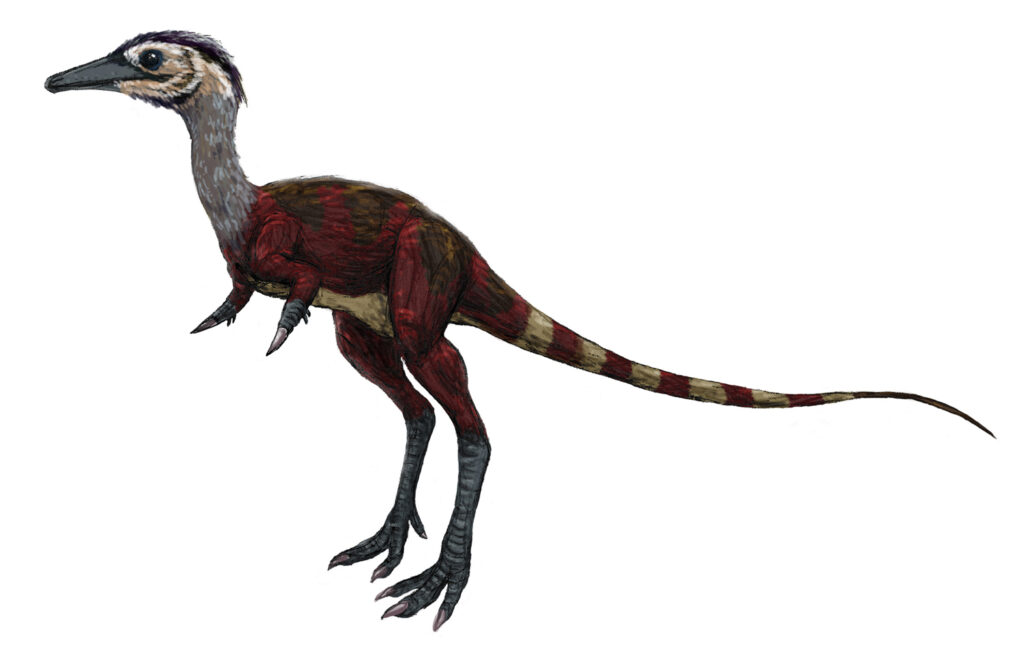
A revolutionary biomechanical perspective emerged in 2019 when researchers examined how tiny arms might have helped these top-heavy predators maintain balance during rapid movements. Advanced computer simulations modeling the center of gravity in tyrannosaurs revealed that reducing arm mass shifted the balance point closer to the powerful hind limbs, potentially improving agility and turning capabilities. This adaptation would have been advantageous for creatures with massively enlarged heads and powerful tails.
Kinematic analysis suggests that as theropods evolved larger skulls, the proportional reduction in forelimb size created an aerodynamically more efficient body form for rapid direction changes when pursuing prey. Motion capture studies comparing models with various arm lengths demonstrated that shorter forelimbs reduced rotational inertia during quick pivoting movements—a crucial advantage for ambush predators. This counterbalance theory helps explain why multiple lineages independently evolved this seemingly counterintuitive trait as a solution to similar biomechanical challenges.
Social Functions: Communication and Display

Emerging evidence points to potential social and communicative functions for the abbreviated forelimbs of certain dinosaurs. Studies of modern reptiles and birds show that limb positioning plays a crucial role in social signaling and territorial displays. Paleontologists have identified specific shoulder joint configurations in tyrannosaurs that would have allowed their arms to perform highly visible, ritualized movements despite their reduced size. These movements might have conveyed important information about dominance, submission, or reproductive readiness to other members of their species.
Analysis of the nerve pathways in preserved fossil impressions indicates these limbs maintained complex innervation patterns despite their reduced size, suggesting precise control capabilities consistent with signaling functions. Some researchers propose that brightly colored scales or feathers on these limbs might have enhanced their visibility during display behaviors, similar to how modern birds use wing patterns during courtship rituals.
Environmental Adaptation: Were Small Arms Habitat-Specific?

Recent ecological analyses have begun connecting arm reduction to specific environmental conditions and hunting strategies. Paleoenvironmental reconstructions of Late Cretaceous ecosystems suggest that many tiny-armed predators operated in relatively open habitats where ambush hunting from cover was a primary strategy. In such environments, the advantage of explosive acceleration from a stationary position would outweigh the benefits of grasping forelimbs.
Fossil distribution patterns reveal that dinosaurs with the most reduced arms often occupied apex predator niches in their ecosystems, where prey capture relied more on powerful jaws than forelimb dexterity. Comparative studies with other theropods show that forest-dwelling hunters, which might need to navigate complex three-dimensional environments, typically retained longer, more functional arms.
This habitat correlation has led some researchers to propose that arm reduction represents a specialized adaptation to specific hunting techniques rather than a general evolutionary trend, explaining why some theropod lineages maintained well-developed forelimbs while others reduced them dramatically.
Challenging Old Assumptions: Debunking Common Misconceptions

The latest research has systematically dismantled several long-standing myths about dinosaur arm reduction. Perhaps the most persistent misconception is that tiny arms represented evolutionary vestiges—useless structures gradually disappearing through disuse. Modern evolutionary biology rejects this Lamarckian view, emphasizing instead that these structures remained under selective pressure, as evidenced by their retained strength and specialized adaptations.
Another debunked notion suggests that arm reduction occurred because these appendages couldn’t reach the mouth for feeding—a simplistic view that fails to consider the multiple potential functions beyond self-feeding. Cutting-edge research published in 2023 used evolutionary rate analysis to demonstrate that tyrannosaur forelimbs evolved at similar rates to other body parts, contradicting the idea they were evolutionarily neglected.
Perhaps most significantly, comparative anatomical studies across multiple species show that arm reduction correlated with specific skull and leg adaptations, indicating these changes were part of an integrated suite of adaptations rather than an isolated evolutionary quirk.
Technological Breakthroughs: How We’re Learning More

Remarkable technological innovations have revolutionized our understanding of dinosaur forelimb functionality in recent years. High-resolution CT scanning now allows paleontologists to examine internal bone structures and growth patterns without damaging precious fossils, revealing stress patterns that indicate how these limbs were used during life.
Sophisticated computer modeling using finite element analysis can simulate muscle forces and range of motion with unprecedented accuracy, testing hypotheses about potential movements and strength capabilities. Advances in comparative genomics have enabled researchers to identify genetic pathways controlling limb development in modern birds and reptiles, providing insights into how similar mechanisms might have driven arm reduction in their dinosaur ancestors.
Perhaps most exciting is the application of soft tissue reconstruction techniques that can detect trace chemical signatures of muscles, ligaments, and even nerve pathways in exceptionally preserved fossils, painting a more complete picture of how these arms functioned. These technological approaches collectively provide multiple lines of evidence that consistently point to specialized rather than vestigial functions for reduced dinosaur forelimbs.
Case Study: Carnotaurus, The Most Extreme Example
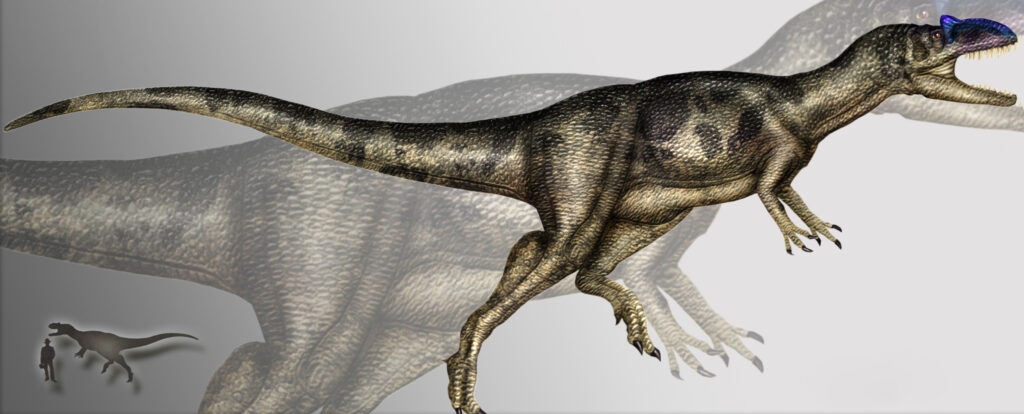
The abelisaurid Carnotaurus represents the most extreme case of forelimb reduction among known theropods, offering a fascinating case study for testing hypotheses about arm functionality. Discovered in Argentina and dating to approximately 70 million years ago, this predator possessed extraordinarily tiny arms with features unlike those of tyrannosaurs.
Recent examinations of exceptionally preserved Carnotaurus specimens revealed evidence of unique musculature adaptations, suggesting these minute appendages served specialized functions despite their size. The anatomy shows extremely limited mobility but concentrated force potential in certain directions, consistent with display rather than predatory functions. Intriguingly, these arms show evidence of distinctive scale patterns preserved in rare skin impressions, supporting the hypothesis that they may have played roles in visual signaling.
The extreme reduction seen in Carnotaurus occurred independently from that in tyrannosaurs, representing convergent evolution toward similar body plans from different starting points. By analyzing the most extreme case of this adaptation, researchers gain insights into the outer limits of how far natural selection can drive this specialization while maintaining functional purpose.
Future Research Directions: Questions Still Unanswered

Despite recent advances, significant questions about dinosaur forelimb reduction remain unanswered, driving exciting new research initiatives. One major avenue of investigation focuses on determining whether different tiny-armed species used their forelimbs for similar functions or if each developed unique applications—a question being explored through comparative biomechanical studies across multiple species.
Paleontologists are also searching for transitional fossils that might document intermediate stages of arm reduction more completely, particularly in lineages where this feature evolved independently. Developmental biologists are investigating how changes in growth regulation genes might have controlled this reduction, potentially offering insights into evolutionary processes beyond dinosaurs. Additionally, new excavation projects specifically target fossil beds likely to preserve evidence of behavior, such as multiple specimens preserved together or trace fossils showing interaction patterns.
Perhaps most intriguingly, researchers are developing methods to detect biochemical signatures of hormone receptors in fossilized bone tissues, which might reveal whether these structures played roles in sexual selection or gender-specific behaviors—questions that traditional fossil morphology alone cannot answer.
Evolutionary Lessons: What Tiny Arms Teach Us About Adaptation

The story of dinosaur arm reduction offers profound insights into evolutionary processes that extend far beyond paleontology. This adaptation demonstrates how natural selection can repurpose existing structures for new functions rather than simply eliminating them when their original purpose diminishes—an important principle in understanding complex evolutionary trajectories.
The independent evolution of reduced forelimbs in multiple lineages illustrates convergent evolution in action, showing how similar environmental pressures can drive unrelated species toward comparable anatomical solutions. Furthermore, the retention of strength despite size reduction highlights the principle of trade-offs in body plan development, where resources and developmental attention shift to features offering greater survival advantages.
Perhaps most significantly, this evolutionary puzzle demonstrates how structures that appear maladaptive or inefficient to human observers may actually represent sophisticated adaptations when properly understood in their ecological context. By challenging our intuitive assumptions about what constitutes an “effective” body design, the tiny arms of mighty dinosaurs remind us that evolution works with existing materials to create functional—if sometimes surprising—solutions to environmental challenges.
Conclusion

The mystery of tiny dinosaur arms continues to captivate both scientists and the public imagination, but recent research has transformed our understanding of this fascinating evolutionary adaptation. Far from being useless vestiges or evolutionary mistakes, these reduced forelimbs likely served multiple specialized functions—from predation assistance and mating behaviors to social signaling and biomechanical balance. The independent evolution of this trait across different dinosaur lineages suggests powerful selective advantages that outweighed the benefits of longer, more dexterous limbs in certain ecological niches.
As technology advances and new fossils emerge, our understanding of these seemingly paradoxical structures grows increasingly nuanced, revealing the complex interplay of evolutionary forces that shaped these magnificent prehistoric predators. The tiny arms of mighty dinosaurs serve as a powerful reminder that evolution operates not by creating perfect designs but by adapting existing structures to meet current challenges—sometimes with surprisingly effective results.

